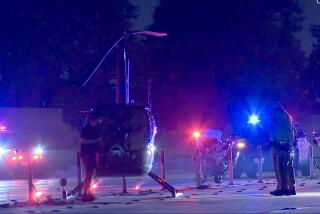Unraveling the Stop-n-Go Puzzle : Freeway phenomenon is investigated--and, hallelujah, a solution is given
- Share via
As we all know, Southern California is an enigmatic place. But sociology aside, for the average Angeleno a chief daily enigma is the maddening mystery of why fast-moving freeway traffic sometimes comes to a teeth-gnashing halt for no apparent reason, then later speeds up, again for no apparent reason.
We can now thank Bob Holmes for helping us solve this central mystery of everyday life. The answer is both as simple as clumsy driving and as complex as shock waves.
Reporting on current traffic research in the June 25 issue of New Scientist, Holmes says such slowdowns occur when traffic is heavy and cars follow each other closely. In such situations any slight slowing, such as when rounding a curve or receiving merging traffic, can be amplified into a near-stop.
This is because poor drivers will brake more than necessary, causing a growing wave of deceleration among those behind. A similar wave of acceleration occurs when traffic begins to move again. (The driver who started the problem is blissfully ignorant of what he did, having long left the scene of the crime.)
“Think of the similar case of sound waves,” writes Holmes in the British journal. “You hear the bang of a firework wherever the sound wave reaches you, not when you pass the site of the explosion. Similarly, your car stops on the motorway wherever it meets the shock wave.”
The lesson: Drive smoothly in heavy traffic. Use the space between your car and the one in front as a kind of shock absorber to moderate changes in speed. The mysterious traffic breakdowns are the fault of you who are too heavy on the brake. We’ve got many intractable problems in Los Angeles, but this one is solvable.
More to Read
Sign up for Essential California
The most important California stories and recommendations in your inbox every morning.
You may occasionally receive promotional content from the Los Angeles Times.










